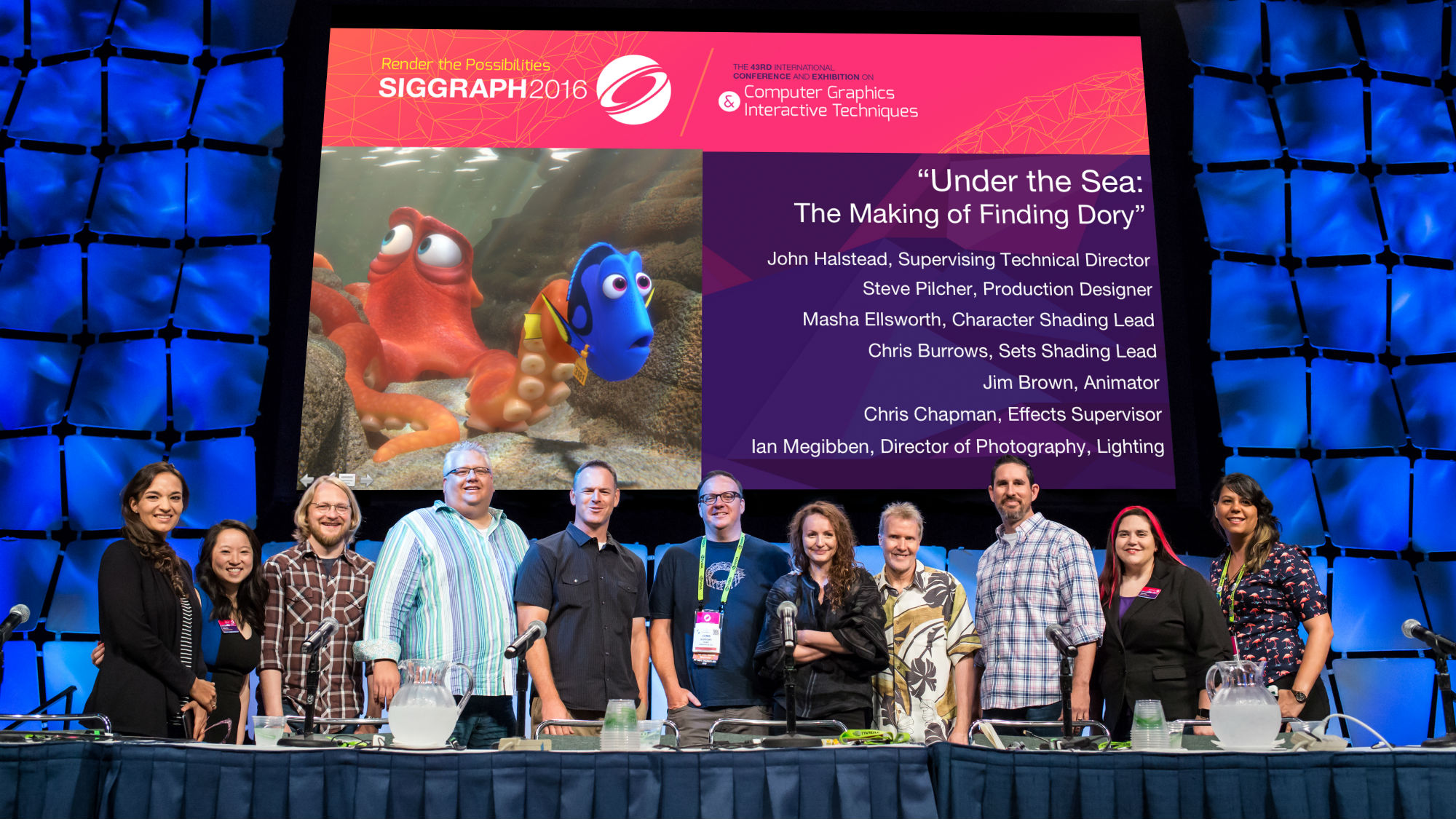This summer, SIGGRAPH 2016‘s Production Sessions program brought in some big names to help attendees peek into the minds behind major studio productions, including the brilliant team for Disney•Pixar’s “Finding Dory.” Pixar Animation Studios brought along a massive panel made up of Steve Pilcher (Production Designer), Jim Brown (Animator), Masha Ellsworth (Character Shading Lead), Chris Burrows (Sets Shading Lead), Chris Chapman (Effects Supervisor), Ian Megibben (Director of Photography, Lighting), and John Halstead (Supervising Technical Director). According to the panelists, the design team had only 22 months to design the fish characters, including brand-new baby Dory (see video below). This meant a lot of in-depth shading work using multiple tools.
“Diffusion and single scattering were necessary to achieve Marlin’s gummy appearance,” noted Ellsworth.
The “Finding Dory” team also employed single scattering in order to re-use the backlight quality from “Finding Nemo” in producing its sequel. In other areas, the team focused on the core of Pixar’s 3D graphics pipeline: Universal Scene Description (USD). With “Dory,” this involved using set files to reference light shaders instead of models. Some other interesting nuggets shared at the conference include:
- Water explosions were inspired by water battle scenes in the 1998 Oscar-winning film “Saving Private Ryan.”
- The character of Hank took four years to develop and required constant visits to Monterey Bay Aquarium and review of content from National Geographic.
- Creating the depth of field led to the use of reserved 16mm and 35mm footage from “Finding Nemo.”
- Houdini was used in the animation of water to show volume.
- Like in the first go-around, water presented the greatest challenge for the effects department.
See what’s next and discover more secrets at SIGGRAPH 2017, 30 July–3 August 2017. If you have a production in mind that you’d like to hear more about next summer, share your thoughts when submissions open later this year!



